(This article contains minor spoilers.)
On the morning of Easter Sunday, my housemates and I celebrated the start of spring with a brunch fit for Godzilla himself. We had everything: waffles, frittatas, bagels, fruit salad, cake, sausage, and three different kinds of bacon, including a vegan “bacon” that we’d never tried before. My housemate and I laughed as we prepared it. The stuff looks like a Looney Tunes character’s idea of bacon: perfectly rectangular with bright red “meat” and evenly-spaced white stripes. When I bit into a slice, though, I stopped laughing. Despite its objectively hilarious appearance, the vegan bacon tasted uncannily like the real thing. Sweet and salty, smokey and savory, it even nailed the texture with crisp edges and melt-in-your-mouth pockets of fat. “How can something look so stupid,” I wondered aloud, “and taste so good?”
That night, I found myself asking a similar question as I watched Godzilla vs. Kong on HBO Max. As a writer, I laughed at the cheesy dialogue and contrived plot. As a huge fan Ishirō Honda’s original Godzilla, I balked at the ongoing depoliticization of a character so deeply rooted in Japan’s post-war trauma. Nonetheless, I had more fun watching Godzilla vs. Kong than I’ve had in recent memory.
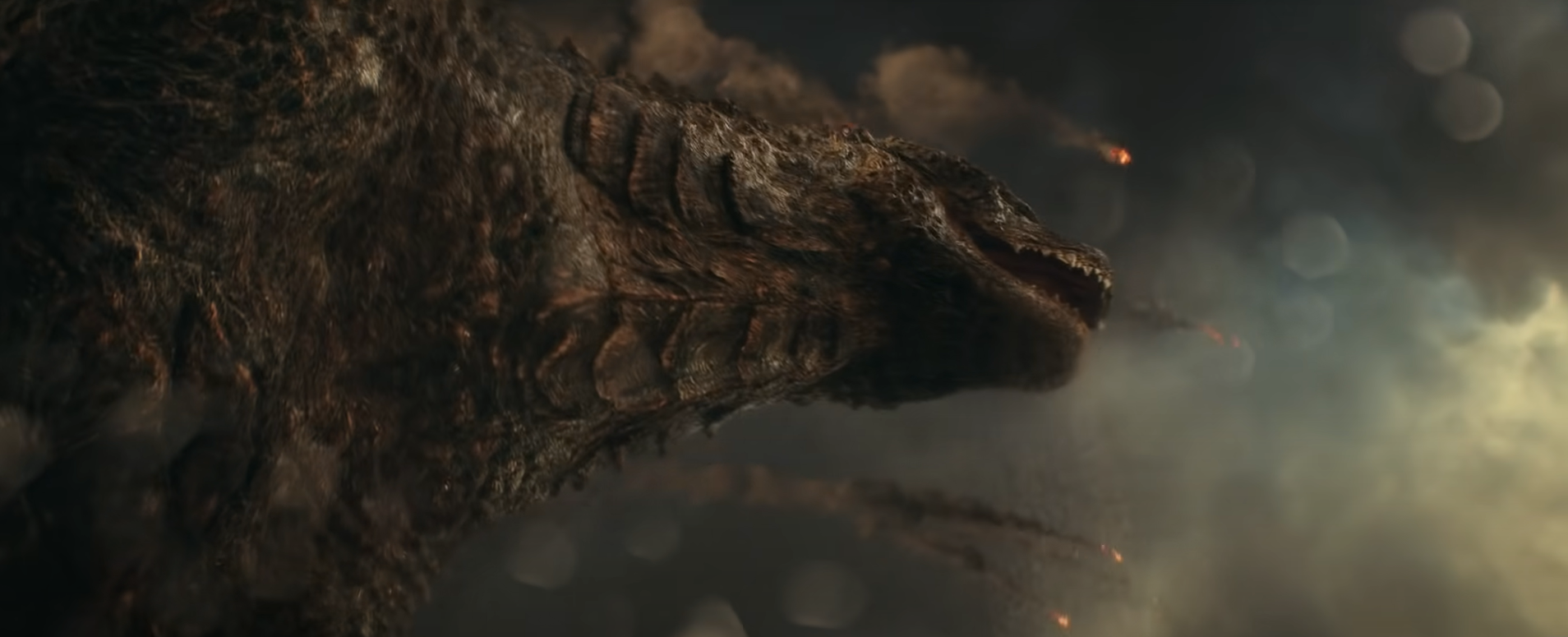
Godzilla vs. Kong Tries Sci-Fi
Early on, Godzilla vs. Kong asks the audience to check any disbelief at the door and take a lot of junk science at face value. The Hollow Earth theory—the belief held by many ancient cultures and some modern conspiracy theorists that our planet contains a hidden subterranean world rather than a molten core—is completely accurate. Okay. Godzilla and Kong originate from Hollow Earth and are biologically compelled to return there (“Like spawning salmon,” a character helpfully comments). Sure. The two monsters hate each other because their ancestors clashed, and that rivalry lives on in their genetic code to the point where they can detect each others’ proximity. Cool. Also, gravity inverts upon entry to Hollow Earth, but fortunately, the Obligatory Shady Corporation invented a vehicle that can safely transport humans through this gravitational disruption. How does it work? The film doesn’t elaborate, and honestly, who cares? Show us the monsters!
I admire the film’s endearingly earnest commitment to justifying its premise, but I ultimately found the attempts at sci-fi worldbuilding to be half-baked and unfulfilling. A good chunk of the movie is devoted to entering and exploring Hollow Earth. The journey gives the effects crew a chance to flex their skills and Kong a chance to tear apart some dinosaurs (err, sorry, titans), but the whole plotline is basically an excuse to find an admittedly cool MacGuffin. In my opinion, the back-and-forth journey takes up more than its share of screentime. I’ll admit to some bias here: I’m unapologetically #TeamGodzilla, and I don’t find Kong nearly as compelling. Despite its title, Godzilla vs. Kong feels first and foremost like a Kong movie, largely due to the Hollow Earth plot. This could be a draw for some viewers (like my colleague Allison), but I wanted more of my big scaly lizard boy.
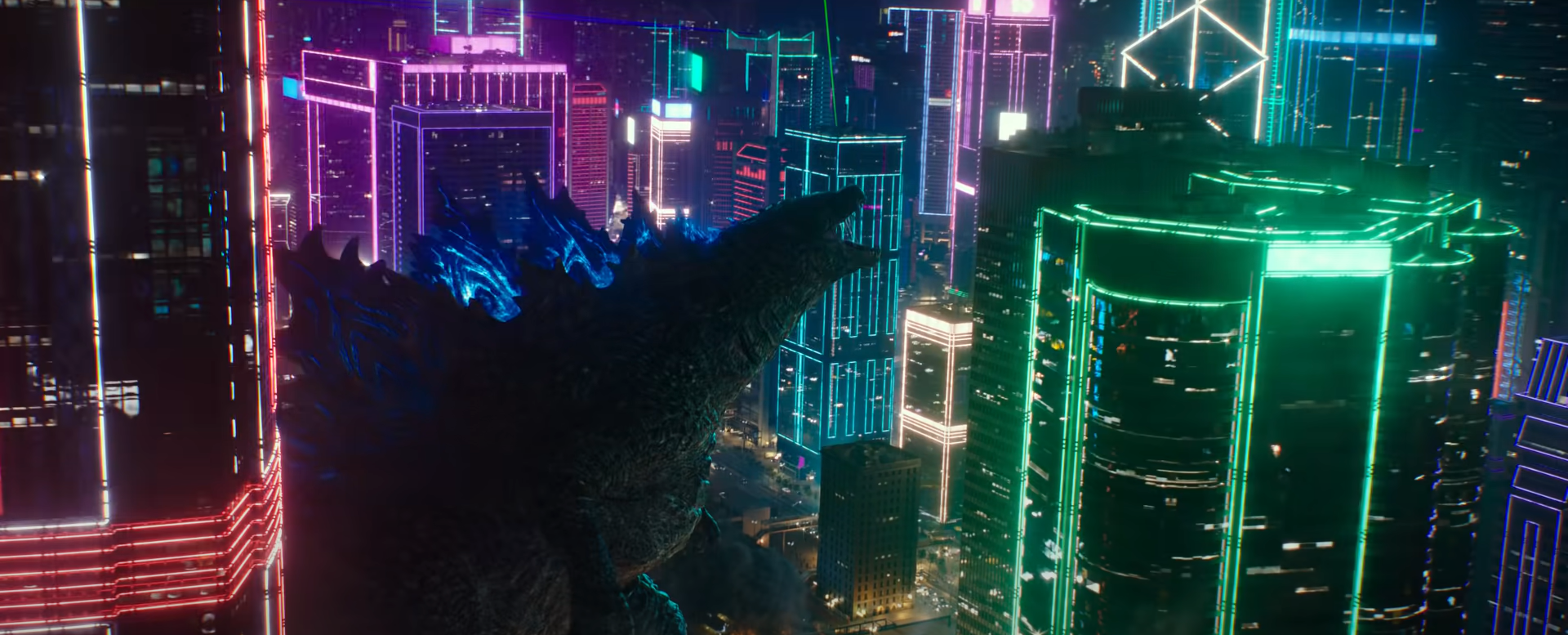
Diversity and Social Commentary
While the monsters are the main attraction, Godzilla vs. Kong also features a large (some would say bloated) and diverse human cast. A caveat: although there are relatively few significant white characters (only one of whom is a man), all three are portrayed sympathetically, while the human antagonists are all people of color. I was especially disappointed by Eiza González’s character, Maia. In I Care A Lot, González proved that she can play a complex and engaging villain. Maia, on the other hand, is an underwritten caricature of a spoiled rich girl. She’s both unsympathetic and uninteresting, through no fault of González. With a cast this large, it’s almost inevitable that someone would get the short end of the stick when it comes to character development, but I wish that lot hadn’t fallen to the cast’s only Latina woman.
Fortunately, there’s diversity on the “good” side as well. Brian Tyree Henry, who won an Emmy for playing Alfred in Atlanta, is loveable and entertaining as a conspiracy theory podcaster. Kaylee Hottle debuts as Jia, a deaf Indigenous girl who shares a deep bond with Kong. Some aspects of her character lean a little too heavily into the “magical disabled person” trope, but I commend the filmmakers for casting a deaf actor in the role and Hottle for her moving performance.
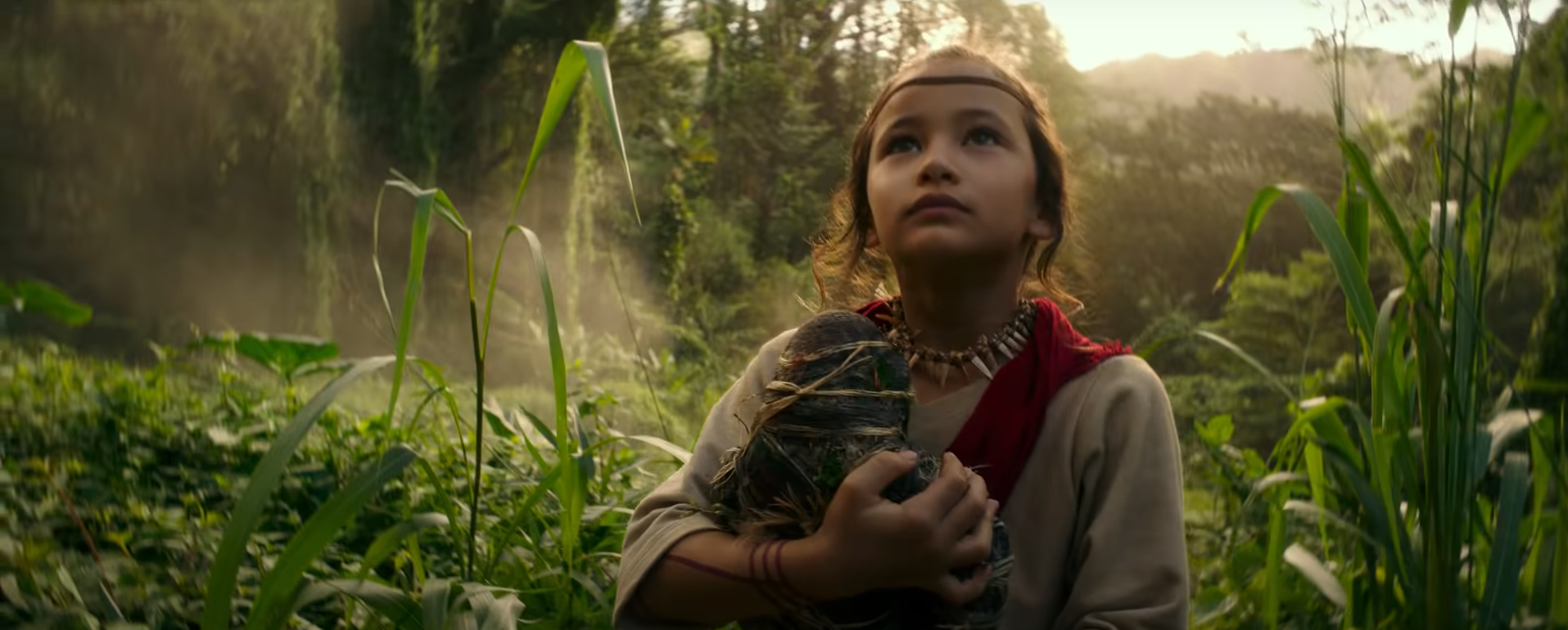
One group of people is notably unrepresented in Godzilla vs. Kong: the victims. We’re treated to some gory gross-out shots of Kong dispatching smaller monsters, and his fights with Godzilla get as brutal as you’d expect, but the film is figuratively bloodless. The only human characters who die onscreen are villains, and the devastation wreaked on Hong Kong is played for awesomeness rather than horror. It’s unfathomable that Godzilla and Kong’s brawls wouldn’t result in civilian casualties, but apart from a throwaway line about Godzilla “hurting people” at the start of the film, any collateral damage remains completely unacknowledged. What will happen to the people whose homes were destroyed by the battles? How many were killed or severely injured? What about the psychological impact of witnessing this kind of disaster? The film shows no interest in engaging with its own repercussions. In some ways, this omission comes as a relief—after the year we’ve had, nobody wants to see overwhelmed hospitals and grieving survivors—but the absence of visible victims is so notable that it almost forces viewers to grapple with the questions the film refuses to ask.
Godzilla vs. Kong sidesteps other ethical concerns. Like many monster movies, it explores themes of humans vs. nature. Humans can be just as destructive as monsters—but only some humans, and in unambiguously evil ways that rarely match up with how the world actually works. Godzilla vs. Kong is hardly alone in its simplistic morality, but the line it draws between the “good” humans and the “bad” humans sometimes feels artificial. The Obligatory Shady Corporation (does this even count as a spoiler?) conducts unethical experiments, allegedly with the goal of protecting humanity. Their actions are rightfully portrayed as unjustified and exploitative. Meanwhile, the human protagonists spend much of the film manipulating Kong, also for humanity’s benefit. To me, the ethical line between the two groups feels tenuous. This tension could have been interesting if the film had cared enough to explore it. Instead, we’re supposed to be okay with Team Kong’s actions because they’re not physically hurting him (just indirectly putting him in harm’s way) and because they love him, I guess?
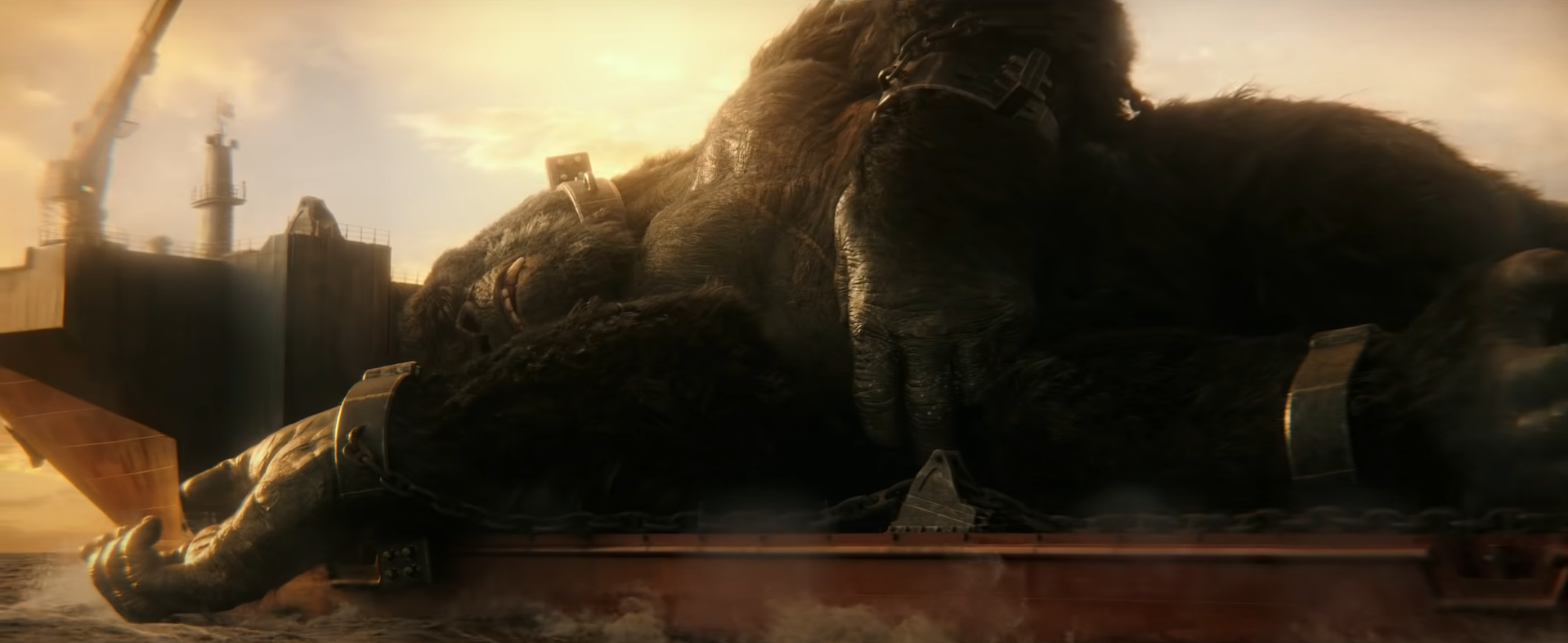
One particularly unsettling moment comes when the protagonists coerce Kong into entering Hollow Earth by playing on his desire to reunite with his own species. Several characters react with discomfort, and I spent the rest of the film waiting for the other moral shoe to drop. While Kong’s loneliness and grief are explored more thoroughly than I expected, and to great emotional effect, that reckoning never comes. Given all of these loose thematic threads, the film’s somewhat cheery ending rings hollow. A better tactic would have been to go all-in, one way or the other: either taking these broader issues seriously or admitting that this is just a movie about monsters punching each other.
The Showdown (a.k.a. what you’re really here for)
Godzilla vs. Kong is at its best when it stops trying to be more than what it is: a WWE-style throwdown between the King of the Apes and the King of the Monsters. We don’t have to wait long for round one. Godzilla interrupts Team Kong’s cruise to Antarctica and initiates a brawl that makes glorious use of its aquatic setting. This early face-off efficiently establishes each character’s personality and combat style. Clear stakes and motivations are crucial to any good fight scene, and the film gives Godzilla and Kong emotional stakes beyond their ancient rivalry. Kong is a loyal and heroic protector, while Godzilla is an unstoppable force of nature who wants Kong to submit and stay the f@#$ out of his way.
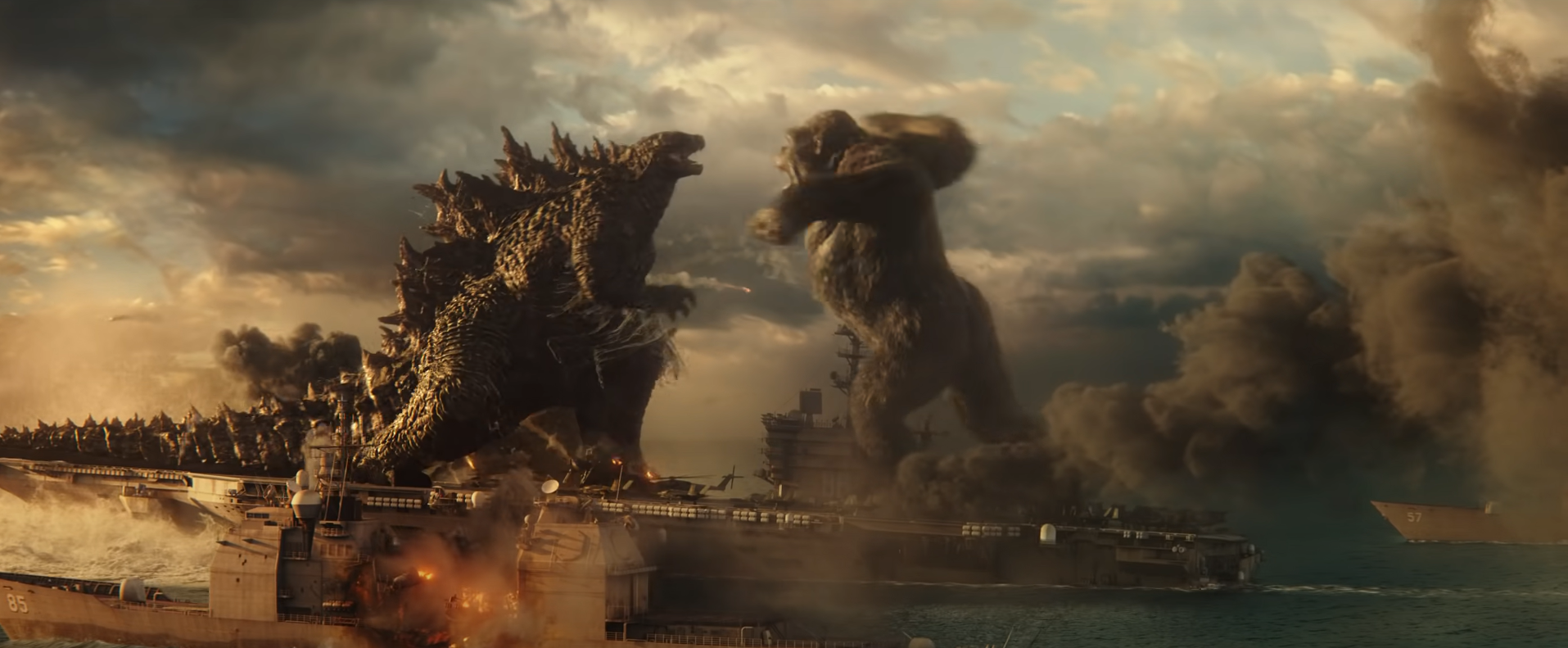
The animators hit the nail on the head with the character designs, averting the uncanny realism of CGI films like The Lion King while maintaining believability. Both monsters are highly expressive, from Kong’s moments of tenderness with Jia to Godzilla’s cold fury. It’s also a joy to watch the characters move. Godzilla slices menacingly through the water and stomps ominously on land. Kong has all the nimbleness of his primate relatives, swinging through Hollow Earth’s jungle and leaping from building to building in Hong Kong.
With such stunning visuals and strong characterization, it’s no surprise that the fights between the monsters are absolutely showstopping. Director Adam Wingard, a self-proclaimed kaiju fanboy, clearly relished finding new ways for Godzilla and Kong to beat the snot out of each other. For his fellow monster fans and action lovers, the result is pure catnip. The fights are packed with moments that had me fist-pumping, leaping from the couch to cheer, and laughing in delight at the sheer nonsense of it all. Godzilla surging up from the ocean to knock Kong off the back of an aircraft carrier? So cool! Kong swinging one totally-not-a-pterodactyl into another like a bat? So stupid! Kong charging at Gozilla with a giant glowing ax? So cool and so, so stupid!
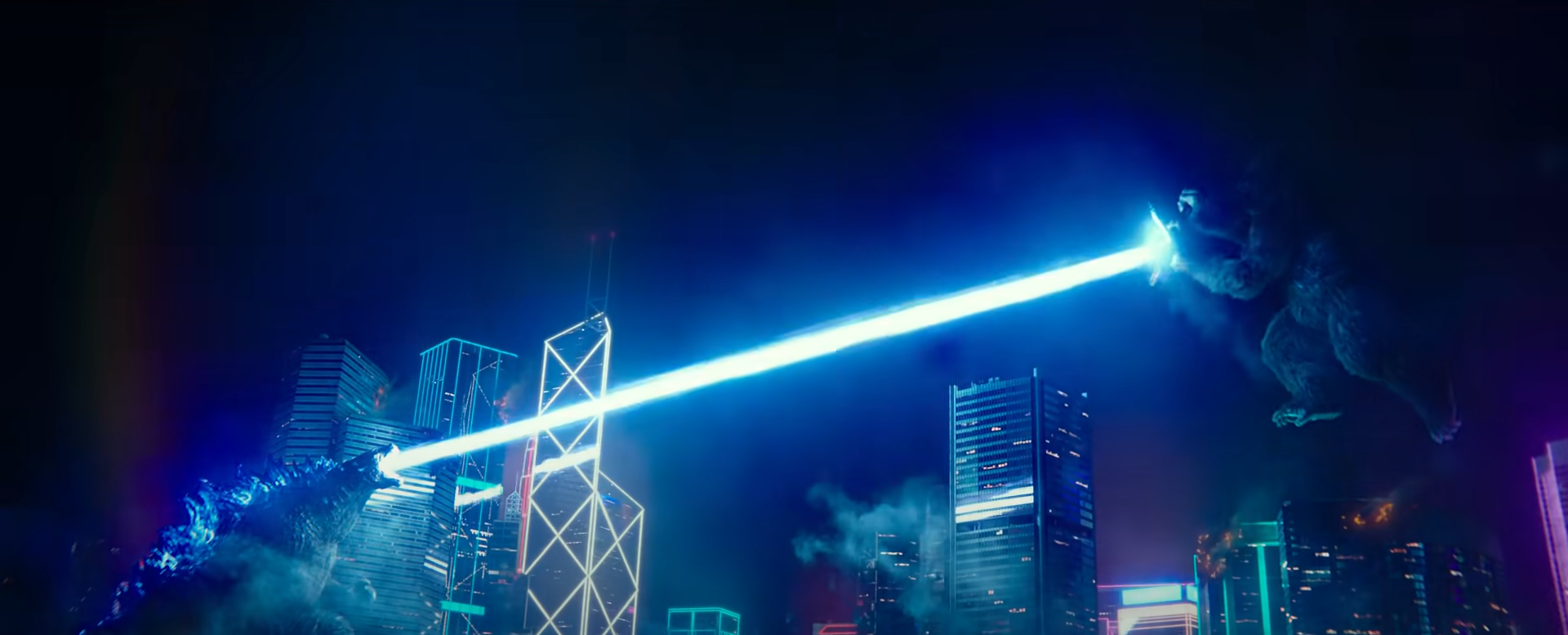
Most impressively of all, Godzilla vs. Kong’s climactic battle both surpassed and subverted my expectations. In a genre that can so easily become predictable and formulaic, feeling genuine surprise during an action sequence is a rare pleasure. This twist elevates the film above its many flaws, making it not just enjoyable but, dare I say… good?
In Conclusion
Analyzing Godzilla vs. Kong for this article revealed plenty of deficiencies that I was too amped up to acknowledge during my first viewing. The majority of the human characters are underdeveloped and the film can’t figure out what point (if any) it’s trying to make about humanity’s place in the world. I don’t care about these flaws nearly as much as I should because I had so much dang fun. This kind of movie isn’t meant to be examined; it’s meant to be experienced. For me, the experience pandered to all of my guiltiest pleasures and offered a gleeful escape from reality. It doesn’t matter that it’s stupid when it tastes this good.
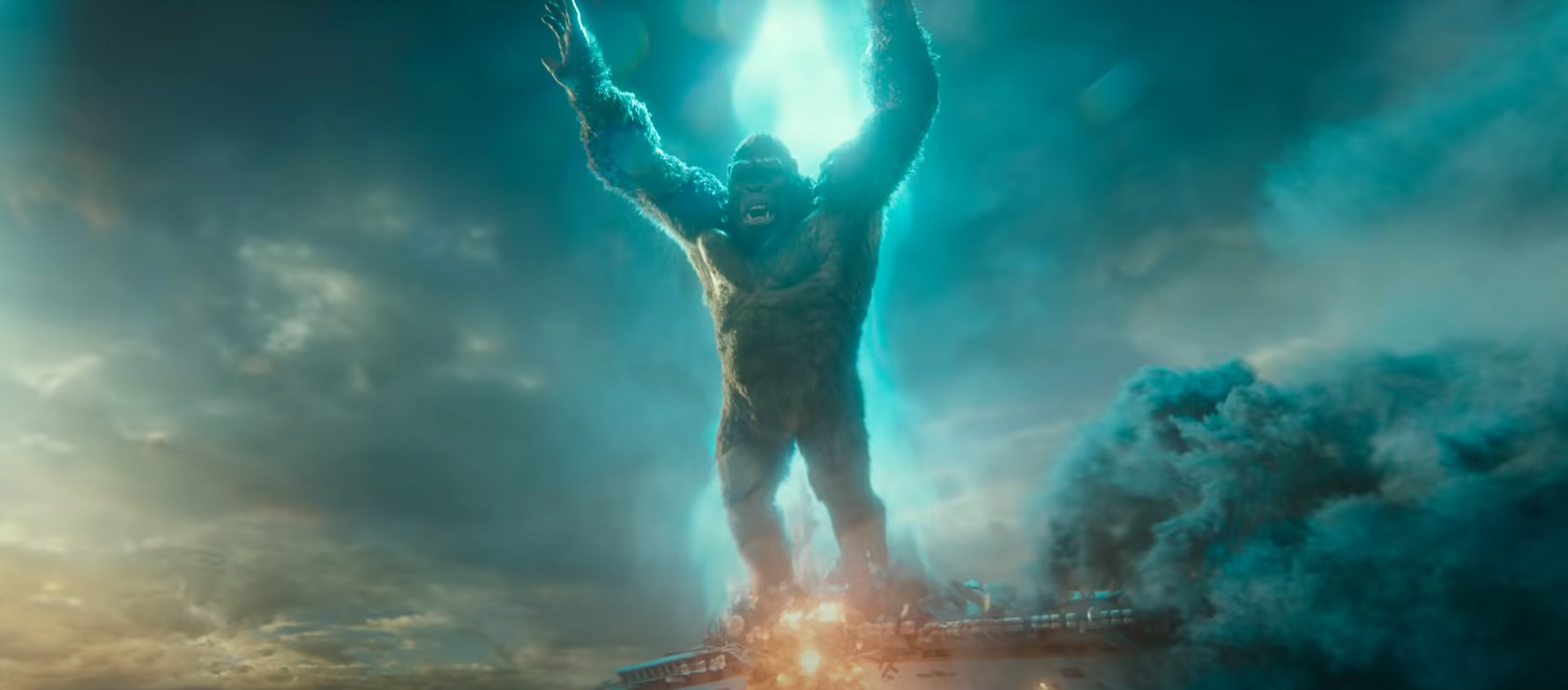
Comments
One response to ““Godzilla vs. Kong” is pure, stupid fun”